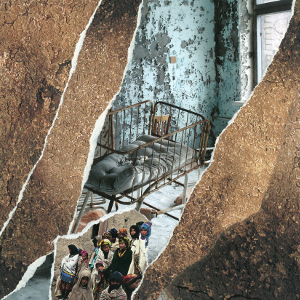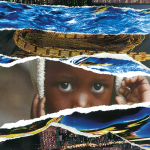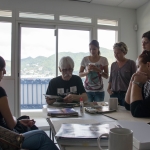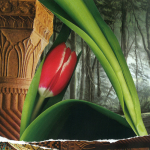This post was written by Brittany Stares, volunteer

Last month, while most of Canada was experiencing record cold temperatures, Art for AIDS International Director Hendrikus Bervoets travelled to sunny Saint Martin to conduct the organization’s first workshop in the Caribbean. Popular image of the Caribbean runs to warm weather, sand and palm trees, but the region also has the second-highest rate of HIV prevalence in the world, behind only sub-Saharan Africa. An estimated 1% of the Caribbean’s adult population is living with HIV/AIDS (contrast this with 0.2-0.4% in Canada ), though the number of new infections is on the decline. Poverty, gender inequality and high levels of migration between islands have all contributed to the disease’s hold in the region.
A small island in the northeast corner of the Caribbean, Saint Martin has not escaped the HIV/AIDS epidemic. Divided into the Dutch constituent country of Sint Maarten and the French Collectivity of Saint Martin with a total population of 77,000, the island is thought to have “moderate to high” risk for HIV transmission, due in part to its heavy reliance on tourism and high transient population. In 2011, 670 persons were known to be living with HIV/AIDS and under care on the island, though troublingly, this figure is thought to represent only 1/3 of the infected population . Under-registration and under-diagnosis, particularly on the Dutch side of the island, constitute a major challenge in tackling the disease locally.
Art for AIDS International was hosted by the Sint Maarten AIDS Foundation, the island’s oldest organization with a focus on HIV/AIDS. Established in 1990, the Sint Maarten AIDS Foundation describes itself as “seek[ing] to prevent the transmission of HIV and other STIs and reduce their negative impact, including stigma and discrimination, while providing compassionate care, practical support services and advocating on behalf of those living with or affected by HIV/AIDS” on the island. Members of the Sint Maarten AIDS Foundation participated in the collage-making workshop, giving aid workers the chance to experience firsthand the power of art and self-esteem building in the fight against HIV/AIDS. This also allows the organizations to share knowledge and build future opportunities to collaborate.
Art produced at this workshop was displayed and sold at the Art for AIDS International gallery in London, Ontario and is still available for purchase in our online shop.


